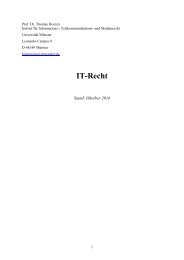3d4yVkKMl
3d4yVkKMl
3d4yVkKMl
Create successful ePaper yourself
Turn your PDF publications into a flip-book with our unique Google optimized e-Paper software.
- 67 -<br />
231. The moratorium on commercial whaling, paragraph 10 (e), provides:<br />
“Notwithstanding the other provisions of paragraph 10, catch limits for the<br />
killing for commercial purposes of whales from all stocks for the 1986 coastal and the<br />
1985/86 pelagic seasons and thereafter shall be zero. This provision will be kept<br />
under review, based upon the best scientific advice, and by 1990 at the latest the<br />
Commission will undertake a comprehensive assessment of the effects of this decision<br />
on whale stocks and consider modification of this provision and the establishment of<br />
other catch limits.”<br />
From 2005 to the present, Japan, through the issuance of JARPA II permits, has set catch limits<br />
above zero for three species 850 for minke whales, 50 for fin whales and 50 for humpback<br />
whales. As stated above (see paragraphs 229-230), the Court considers that all whaling that does<br />
not fit within Article VIII of the Convention (other than aboriginal subsistence whaling) is subject<br />
to paragraph 10 (e) of the Schedule. It follows that Japan has not acted in conformity with its<br />
obligations under paragraph 10 (e) in each of the years in which it has granted permits for<br />
JARPA II (2005 to the present) because those permits have set catch limits higher than zero.<br />
232. The factory ship moratorium, paragraph 10 (d), provides:<br />
“Notwithstanding the other provisions of paragraph 10, there shall be a<br />
moratorium on the taking, killing or treating of whales, except minke whales, by<br />
factory ships or whale catchers attached to factory ships. This moratorium applies to<br />
sperm whales, killer whales and baleen whales, except minke whales.”<br />
The Convention defines a “factory ship” as a ship “in which or on which whales are treated either<br />
wholly or in part” and defines a “whale catcher” as a ship “used for the purpose of hunting, taking,<br />
towing, holding on to, or scouting for whales” (Art. II, paras. 1 and 3). The vessel Nisshin Maru,<br />
which has been used in JARPA II, is a factory ship, and other JARPA II vessels have served as<br />
whale catchers. As stated above (see paragraphs 229-230), the Court considers that all whaling that<br />
does not fit within Article VIII of the Convention (other than aboriginal subsistence whaling) is<br />
subject to paragraph 10 (d) of the Schedule. It follows that Japan has not acted in conformity with<br />
its obligations under paragraph 10 (d) in each of the seasons during which fin whales were taken,<br />
killed and treated in JARPA II.<br />
part:<br />
233. Paragraph 7 (b), which establishes the Southern Ocean Sanctuary, provides in pertinent<br />
“In accordance with Article V (1) (c) of the Convention, commercial whaling,<br />
whether by pelagic operations or from land stations, is prohibited in a region<br />
designated as the Southern Ocean Sanctuary.”



